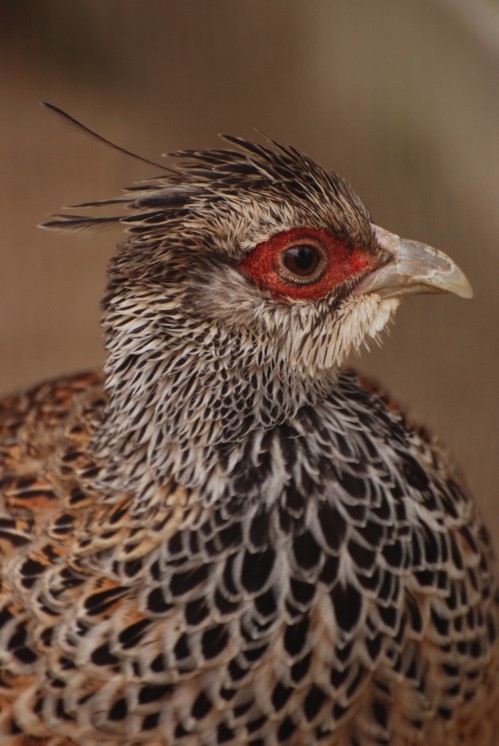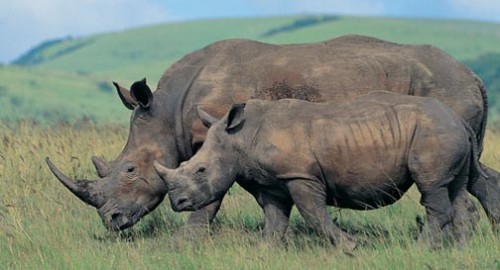On the foothills of the Himalayas, on rocky, moist terrains, a bird called the Cheer Pheasant was often seen, flying around in groups, occasionally digging the soil with its beaks and feeding on seeds and small insects. Sadly, as the terrains vanished so did the birds with IUCN marking them as a Vulnerable species. But thanks to the efforts of Cheer Pheasant Conservation Breeding Project at Chail, Himachal Pradesh, Cheer pheasant may soon be seen again in plenty in the wild.
The project has been actively involved in the conservation and rearing of the bird and is now all set to release the captive bred birds into the wild in the next few months.
“Around 20 cheer pheasants bred in captivity at the Chail pheasantry would be released by September-October,” chief wildlife warden Lalit Mohan said.
Mohan, who evolved the ‘parent rearing technique’ for breeding the cheer pheasant in captivity, said,
“The aim to reintroduce the pheasants in the wild is to increase their number in their natural habitat.”
The cheer pheasant (Catreus wallichi) is classified as ‘Vulnerable’ on the IUCN Red list. This species is included in Schedule-1 of protected species under the Wildlife Protection Act. The reason for its population decline is the habitat that is vanishing due to human pressure.
The birds prefer to live in rocky, precipitous terrain dominated by scrub, grass and stunted trees, mostly between 1,200 and 3,250 metres above sea level. They are mainly found in the southern foothills of the Himalayas ranging from Pakistan in the west through Kashmir, Himachal Pradesh and Uttaranchal in India to Nepal in the east.
In Himachal Pradesh, the cheer pheasant is found in certain parts of the Majathal and Chail Wildlife sanctuaries in Solan district, Great Himalayan National Park in Kullu district and the Sarahan sanctuary area in Shimla district.
These pheasants tend to live in groups of five to fifteen birds for much of the year, but form monogamous pairs during the breeding season from late April to June. The cheer pheasants are shy. Each pair needs seclusion and mutual attraction for successful breeding.
As per the 2005 census conducted by the state wildlife wing, there were around 5,000 cheer pheasants in the wild in Himachal Pradesh.
Human population pressure, grazing pressure from livestock, hunting and changing patterns of land-use are resulting in its decline within this habitat.
But the captive breeding gives a chance to re-introduce the bird into the wild habitat. At present, the habitat where the birds would be released is being thoroughly examined by Sandeep Rattan, wildlife wing’s senior veterinary officer, said the Wildlife Trust of India. Use of technology will also ensure that the released birds are constantly monitored.
“Each bird will be tagged with a radio collar and will be tracked with the global positioning system (GPS) to ascertain the success rate of the re-introduction project,” he added.
John Corder, a conservation-breeding expert from Britain, was also associated with the project breeding cheer pheasants. He too appreciated the ‘parent rearing technique’ for rearing the endangered species in captivity.
Failures in the past of similar experiments in Pakistan have ensured that more care is taken here now to avoid inbreeding and to that effect DNA profiling of the birds being reared is being done.
Rattan said “We are taking all precautions, their DNA profiling indicates they are very sound genetically and there is no inbred stock.”
The Cheer Pheasant Conservation Breeding Project was started by the wildlife wing at Chail, about 35 km from the state capital, in 2008 with financial aid from the Central Zoo Authority.
More Related Stories,
Chasing Monals: A Traveller Spots the State Bird on Trip to Uttarakhand
Western Tragopan: Vulnerable State Bird of Himachal Pradesh
Electric Cars to Replace Fuel Run Cars in Shimla Sanctuary







Dear author,
what is the source of below mentioned information plz specify .
Rattan said “We are taking all precautions, their DNA profiling indicates they are very sound genetically and there is no inbred stock.”
as this information about DNA profiling seems not worthy enough to be believed.
with regards from
Nipun mohan aggarwal
Advocate Allahabad High court
Allahabad
Thank you for your comment and query. The captive breeding of cheer pheasants project was going on for a few years. To ensure that the pheasant that were born were genetically stronger and there was no inbreeding, the individual bird’s DNA sample were sent to Jaypee University of Information Technology (JUIT) waknaghat in Himachal Pradesh. Here DNA profiling of the birds ensured the genetic diversity. This information was provided by the HP forest department and therefore verified.